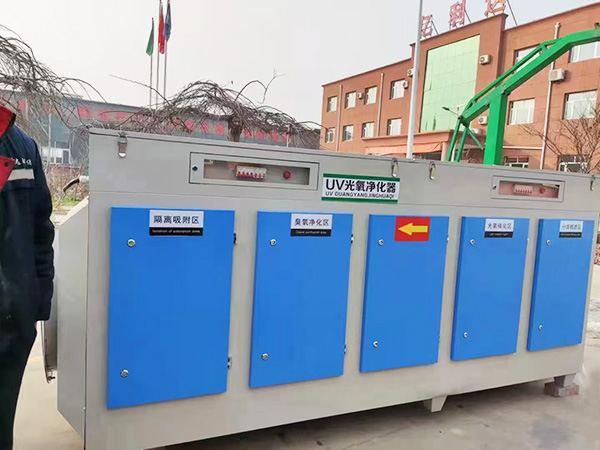-
All
-
bag Dust Collector
-
Electrostatic Precipitator
-
Cartridge Dust Collector
-
Desulfurization And Denitrification Equipment
-
Dust Collector Bag
-
Dust Collector Skeleton
-
Electromagnetic Pulse Valve
-
Rotary Valve
-
Screw Conveyor
-
Dust Conditioner
-
Plug Valve/Butterfly Valve
-
Scraper Conveyor
-
Catalytic Oxidizer
-
Cyclone Dust Collector
-
Sintered Plate Dust Collector
-
Spray Tower
-
Activated Carbon Adsorber
-
Light Oxygen Purifier
-
Dry Filter Box
-
Bucket Elevator

UV Photocatalytic Oxygen Purifier
The UV photocatalytic oxygen purifier is a professional waste gas treatment equipment that relies on UV photolysis and catalytic oxidation technology. ...
The UV photocatalytic oxygen purifier is a professional waste gas treatment equipment that relies on UV photolysis and catalytic oxidation technology. Its core advantages lie in no consumable operation, thorough decomposition of organic pollutants, and no secondary pollution. It is widely used in industries such as spraying, printing, chemical, plastic granulation, and food processing. It can efficiently treat VOCs (volatile organic compounds) such as benzene, toluene, xylene, ethyl acetate, and odorous gases, especially suitable for low - and medium concentration (100-1000mg/m ³) organic waste gas scenarios. It is a key equipment for industrial waste gas emission standards and odor control.
From the perspective of structural design, the equipment adopts a modular sealed box structure, with the core consisting of four parts: pre-treatment unit, UV photocatalytic unit, airflow distribution device, and exhaust unit. The overall design focuses on sufficient contact between exhaust gas and high-energy ultraviolet rays. The preprocessing unit is equipped with a primary filter and a metal baffle to intercept dust, oil mist, and large particulate impurities in the exhaust gas, preventing them from adhering to the surface of UV lamps or catalysts and affecting purification efficiency; The UV photocatalytic unit is the core component, which is equipped with dual wavelength (185nm+254nm) UV lamps and nano TiO ₂ catalytic plates. The lamps are made of high-power quartz material and have a lifespan of up to 8000-12000 hours. The catalytic plates are supported by honeycomb ceramics and loaded with nano TiO ₂ coatings, greatly improving the catalytic reaction area; The airflow distribution device guides the exhaust gas to flow uniformly through the UV photocatalytic unit through a guide plate and a porous distribution plate, avoiding insufficient purification caused by rapid local airflow; The exhaust unit is equipped with a centrifugal fan and muffler to ensure stable flow of exhaust gas (with wind speed controlled at 2-3m/s), while reducing equipment operating noise (noise ≤ 75dB). The material of the box can be selected from carbon steel (anti-corrosion coating treatment), 304 stainless steel or PP according to the corrosiveness of the exhaust gas, suitable for different industrial environments.
Its working principle revolves around the dual action of "photolysis cracking+catalytic oxidation", without the need for adding chemical agents, making the entire process environmentally friendly. The exhaust gas containing pollutants is first treated by a pre-treatment unit to remove impurities, and then enters the UV photocatalytic unit: firstly, high-energy ultraviolet light with a wavelength of 185nm penetrates organic pollutant molecules, destroying their chemical structures such as carbon carbon bonds and carbon hydrogen bonds, and breaking down large organic molecules such as benzene and toluene into small molecular fragments (such as CO, H ₂ O, and small hydrocarbon molecules); Secondly, ultraviolet light with a wavelength of 254nm excites the nano TiO ₂ catalytic plate, producing highly oxidative hydroxyl radicals (· OH) and superoxide anion radicals (O ₂⁻) on its surface. These active groups can rapidly oxidize small molecule pollutants, completely decomposing them into harmless carbon dioxide and water; Finally, the purified gas is stably discharged through the gas flow distribution device and discharged by the exhaust unit. The removal rate of organic pollutants during the entire process can reach 80% -90%, and there is no secondary pollution such as waste residue or liquid.




